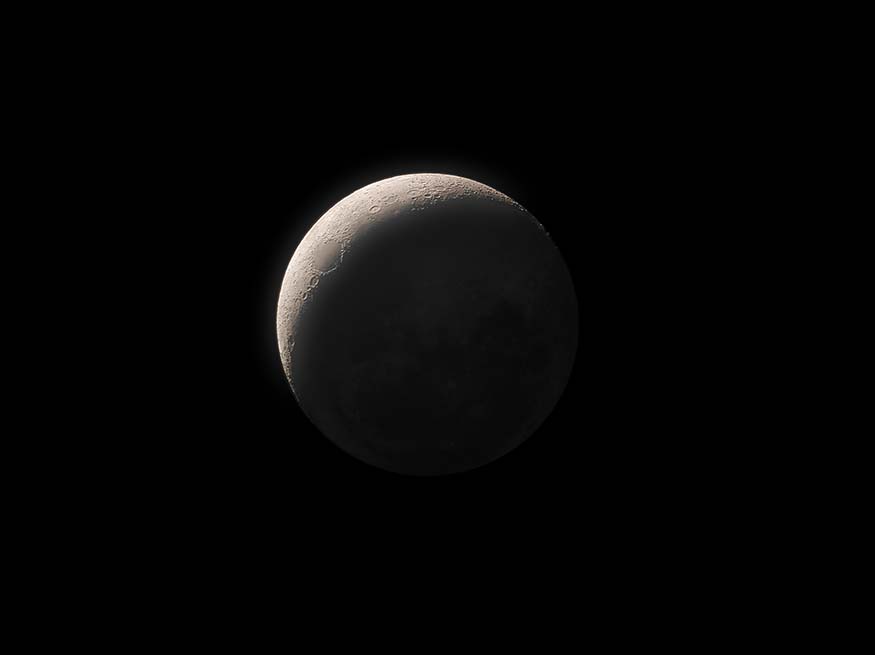
BEAUTY: 
BRAGGING RIGHTS: A beautiful sight
HOW EASY IS IT TO SEE? Just look up
TYPE: Moon
DISCOVERED: Known since antiquity
When humans settled down and started planting fields of wheat and rice, the motion of the sun and the stars were used to track time. Solstices and equinoxes announced the passing of the seasons—critical knowledge if your life depended on a bountiful harvest. But before that, when nomadic tribes wandered freely across the plains and steppes, it was the moon that served as the universal clock.
Unlike the sun, the moon changes notably over its 29.5-day cycle. In the first week, the moon grows from a tiny sliver to half full, and each day brings a noticeable change; the moon is full after another week, and then it begins to shrink again. Whereas only high priests could tell you when the solstice happened, even illiterate people could be told to “wait until the next full moon.”
It’s no wonder that many early calendars were moon-centric, and even now we use months as a primary unit. The Jewish Midrash says that, “the moon has been created for the counting of the days,” and in the Islamic calendar, the months traditionally begin when the crescent of a new moon is first sighted.
In our era of atomic clocks and time-synchronized cell phones, we don’t need to look at the moon to figure out the date. But it’s still beautiful to look at the new crescent moon and watch as it goes through its cycle. Looking at the moon today connects us to a different time, when much of daily life was synchronized to its long orbit.
WHAT YOU MIGHT SEE THROUGH AMATEUR EQUIPMENT
The new moon starts the cycle. The moon is situated in front of the sun and, hence, invisible. At sunset you’ll see the crescent moon low on the horizon—it’s just a little bit behind the sun and will set soon thereafter.
On the next sunset, the moon will be a little bit higher and the crescent will be bigger and brighter. Each day thereafter, the moon will grow and set later and later. At quarter-full, the moon will be directly overhead when the sun sets. Two weeks from the new moon (or so) the full moon will rise in the east just as the sun is setting in the west.
Day after day the moon will rise later and later. Three weeks after the new moon, a quarter moon will be high in the sky just as the sun rises. Eventually, a crescent moon will hang low in the eastern sky just before sunrise, and then it will be a new moon again.
How early can you see it? I love seeing a thin crescent moon set against the fading light of sunset. Somehow it looks closer to us, like it’s just a little bit past the horizon.
The closer it is to new moon, the harder it is to see. A very thin crescent is nearly invisible against a bright sky of sunset. But it’s easier if you know where (and when) to look. A day after the new moon, start looking at the horizon just after the sun sets.
Earthshine. Each subsequent night the crescent will stay longer and longer past sunset. The skies will grow darker and eventually you’ll be able to see that the dark part of the moon is not completely dark! You’ll be able to see the whole moon, dim and pale, inside the bright crescent.
This is called Earthshine: the dark part of the moon is being illuminated by the Earth. Anyone on the moon then is seeing a “Full Earth” high overhead, with the bright Earth lighting up the surface.
Watch the moon climb. Each night the moon will set about 50 minutes later than the night before. It will be higher in the sky at sunset. If you watch the moon day after day at the same time, you’ll be able to see it move through its cycle, just as our nomadic ancestors once did.